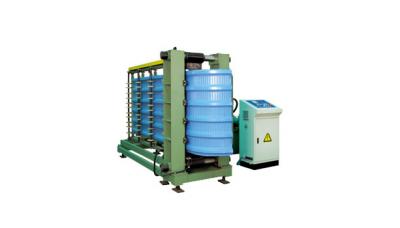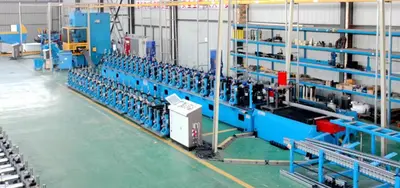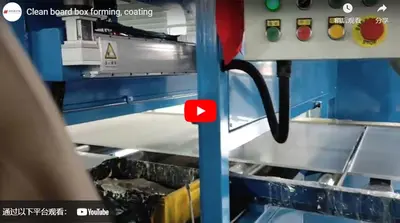Sandwich Panel Production Line: Improving Wall Panel Quality
In today's rapidly evolving construction industry, sandwich panels, as a new type of eco-friendly and efficient building material, are gradually replacing traditional building materials, becoming the mainstream choice for modern construction.
The sandwich panel production line, as the core production facility of this innovative material, not only promotes the green transformation of the construction industry but also greatly improves the production efficiency and quality of building materials. This article will delve into the composition, working principle, product characteristics, and application of sandwich panel production lines in the construction industry.
Working Principle and Composition of Sandwich Panel Production Line
The sandwich panel production line is a complete set of automated production equipment that integrates multiple processes, including raw material handling, mixing, molding, curing, cutting, and packaging. Through highly automated production methods, it achieves efficient and stable production of sandwich panels.
The core equipment of the production line includes raw material mixing equipment, molding equipment, curing equipment, and cutting equipment, all of which are equipped with advanced automation control systems to ensure precise control of the production process and stable product quality.
In the raw material handling stage, the production line precisely measures and proportions various raw materials, such as cement, fly ash, lightweight aggregates, and reinforcing fibers, ensuring that the quality and ratio of the raw materials reach optimal levels. Subsequently, the raw materials enter the mixing equipment, where they are transformed into a uniform concrete slurry through a highly efficient mixing process.
The key to this stage lies in the performance of the mixing equipment and the control of the mixing time, which directly affect the quality and performance of the subsequent products.
Molding equipment is one of the core stages of the sandwich panel production line. In this stage, the concrete slurry is injected into molds and shaped into wet panels of certain shapes and sizes through pressing and forming processes. The precision and stability of the molding equipment are crucial to the dimensional accuracy and surface quality of the products. Moreover, molds can be customized according to customer requirements during the molding process to meet various architectural designs and functional needs.
Curing equipment is the key stage to ensure the quality of sandwich panels. During the curing stage, the wet panels enter a curing chamber, where high-temperature and high-pressure steam curing accelerates the hydration reaction of the cement, enhancing the strength and durability of the panels.
The control of curing time and temperature significantly impacts the final performance of the products. The cured panels not only possess excellent properties such as lightweight, high strength, thermal insulation, and sound insulation but also features such as fire resistance, moisture resistance, and corrosion resistance, making them the ideal choice for modern building walls.
Cutting equipment is the final stage of the sandwich panel production line. During this stage, the cured panels are sent to the cutting equipment, where they are precisely cut and trimmed according to customer requirements. The precision and efficiency of the cutting equipment directly affect the dimensional accuracy and appearance quality of the products. Additionally, edging and polishing can be performed during the cutting process to enhance the aesthetics and usability of the products.
Advantages of Sandwich Panels Produced by Sandwich Panel Production Lines
Firstly, they are lightweight and high-strength, effectively reducing the self-weight of buildings and improving seismic performance.
Secondly, sandwich panels have good thermal insulation and sound insulation effects, significantly reducing the energy consumption of buildings and improving indoor environmental comfort.
Additionally, sandwich panels have characteristics such as fire resistance, moisture resistance, and corrosion resistance, meeting the needs of various construction scenarios.
In the modern construction industry, sandwich panels are widely used in residential, commercial, and industrial buildings. They are used not only for the construction of interior and exterior walls and partitions but also for the renovation and refurbishment of old buildings, enhancing the aesthetics and energy efficiency of buildings.
Furthermore, sandwich panels are also suitable for the construction of various public facilities, such as schools, hospitals, and sports venues, contributing to the sustainable development of modern cities.
In summary, the sandwich panel production line, as a green innovation pathway for modern building materials, is promoting the green transformation and sustainable development of the construction industry with its efficient, environmentally friendly, and high-quality production methods. With continuous technological advancements and market expansion, sandwich panel production lines will play an increasingly important role in the future construction industry, creating better, more livable, and sustainable urban environments for people.


 CN
CN
 EN
EN
 fr
fr  de
de  es
es  it
it  ru
ru  pt
pt  ar
ar  th
th  pl
pl  ro
ro 







 Call us on:
Call us on:  Email Us:
Email Us:  #1809, Jianhu Rd, Keqiao, Shaoxing, Zhejiang, China
#1809, Jianhu Rd, Keqiao, Shaoxing, Zhejiang, China 